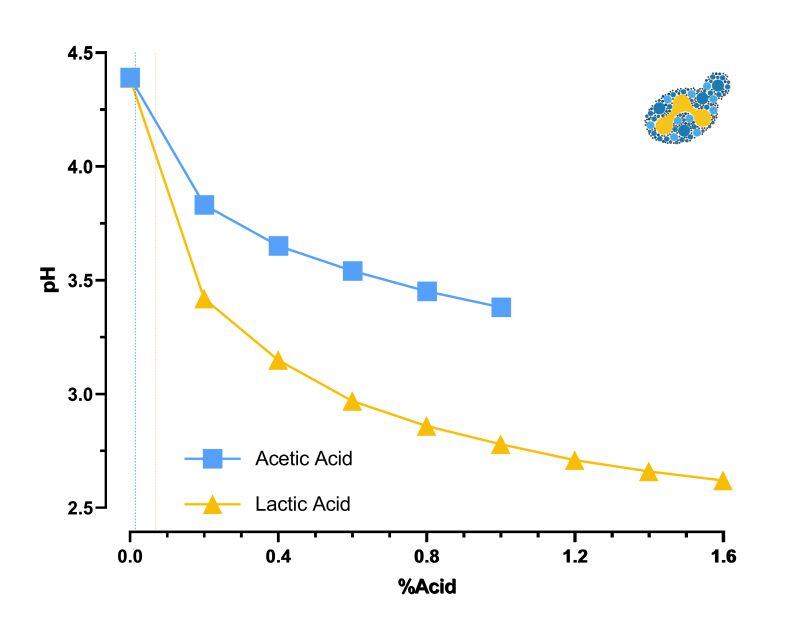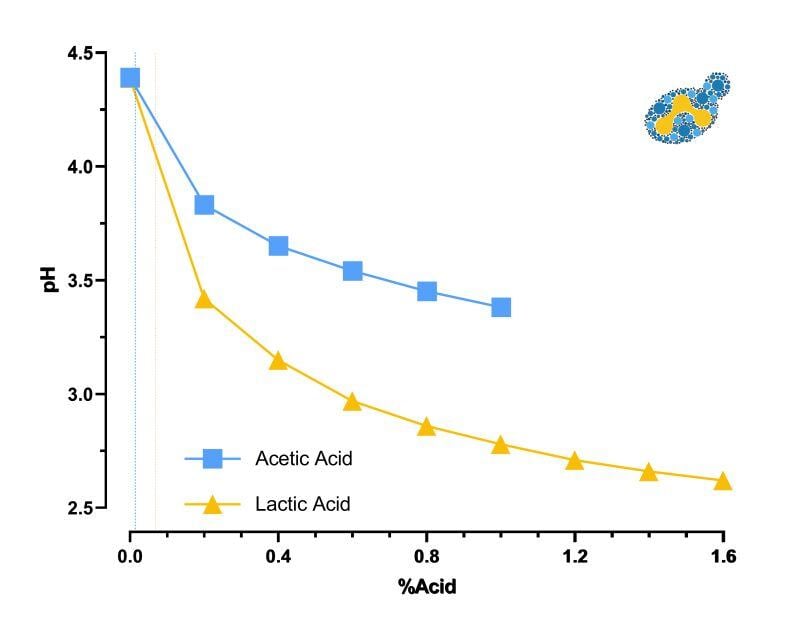The pH scale, that fundamental guide in brewing, was crafted in 1909 by S.P.L. Sørensen. He devised a method for determining the acidity or alkalinity of solutions on a scale from 0 to 14. His ingenious creation unveiled the significance of pH in biochemical reactions, particularly those brewing relies on.
But what is pH? In its essence, it measures the concentration of hydrogen ions (H+) in a solution. The pH spectrum spans from 1 (the acidic extreme) to 14 (the alkaline side). It's all about the balance between H+ (hydrogen ions) and OH- (hydroxide). In the world of brewing, mashing pH plays a starring role. It profoundly influences enzymes, the fundamental players in the transformation of grain starches into sugars. But it is not the best indicator of a beer's sourness!

Figure 5. Image adapted from Shayevitz et al., (2022) J Am Soc Brew Chem. 80 (3), 258-269
The relationship between wort pH and acid concentration is far from linear, thanks to the wort's unique buffering capacity. A solution to this is Total Acidity, aka Titratable acidity, which is a great indicator of a beer's true sourness level. Lactic acid causes a more significant drop in pH compared to acetic acid at the same concentration due to its physio-chemical properties. Lactic acid, with a pKa of 3.86, is about ten times stronger than acetic acid, with a pKa of 4.75. Showcasing how acetic acid can be perceived as more acidic than lactic acid. This discovery underscores the importance of measuring Total Acidity (TA) alongside pH when brewing sour beers with a pH lower than 3.5. Even a very small change in pH can represent a significant increase in acidity. The higher the Total Acidity (TA), the more acidic and sour the beer will be.
Not only that, but acetic acid also plays tricks on your senses! At just 140 mg/L, it's more perceptible than lactic acid, which has a higher sensory threshold at 686 mg/L (see Figure vertical dashed lines).
Thus, in a beer with moderate concentrations of lactic acid, it can be present at concentrations above its average sensory threshold and do not induce a pH change, thereby going undetected. Only a robust sensory and QC program can save the day!
Speaking of density, it's a key player in this game too. An increase of 0.2% lactic acid in wort will lead to a density increase of 0.1 to 0.2°P. This gives the illusion of higher apparent final attenuation when measured via densitometry, masking fermentation progress during kettle souring. It's all about understanding the numbers behind the scenes!
The next time you enjoy a sour beer, remember the intricate dance between pH and acidity that's happening in your glass!





